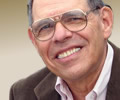L’Africaine was Giacomo Meyerbeer’s last opera. He started work on the project in 1852. Other activities, the unavailability of singers, and the death of his libretist Eugène Scribe delayed the completion of the opera. The full score was copied the day before Meyerbeer died in 1864. But a performing version done by the composer would have substantially differed from the score he left at his death.
The critic and musicologist François-Joseph Fétis produced an edition that was long the version performed. Its first staging was on 28 April 1865 by the Opéra at the Salle Le Peletier in Paris in the performing edition undertaken by Fétis. Fétis’ version has been frequently criticized as missing the subtlety of the interactions Meyerbeer intended.
The opera was immensely popular during the remainder of the 19th century. But like the rest of Meyerbeer’s operas, it virtually disappeared in the 20th century. There has been some increase in interest during the current century, but it’s still a rarity. It depicts a series of fictional events in the life of the Portuguese explorer Vasco da Gama.
What never went away was the tenor aria “O Paradis!” (O Paradise!). It’s in Act 4, da Gama is transported by the beauty of an island, somewhere east of Africa, on which he is scheduled for execution. He gets away in the 5th Act. The aria is often sung in Italian as ‘O Paradiso’.
Just about every tenor has a go at the aria both in recitals and on recordings. I’ll start with one taken from a live performance of the opera in San Francisco in 1972. Placido Domingo had what was likely the best day of his life. His rendition of O paradis is definitive. The aria can’t be done better than this. The audience’s reaction is appropriate to the worth of the performance.
Miguel Fleta was for a short time a tenor of extraordinary ability. But a life of dissipation and bad decisions prematurely ended his career and then his life at age 40. But while he lasted, he was a marvel. His pianissimo singing was miraculous.
Franco Corelli had the perfect sound for this aria. He belts it out of the park in this recording made in concert in Japan.
Mario Lanza is the only great tenor to make his career in the movies rather than in the opera house where he belonged. Both he and his audience suffered because of his seduction by the movie mogul Louis B Mayer. This excerpt is from the movie Serenade. It’s to a piano accompaniment. Lanza’s interpretation is sensational.
Jussi Björling needs no further comment here. One of the greatest tenors of any era. This recording was made in 1937 when the tenor was only 26 years old. The full Björling sound is completely formed. The voice is instantly recognizable.
Giacomo Lauri Volpi had a very long and distinguished career both in America and Europe. He was able to sing just about anything. I confess that I’ve never been a great fan of his vocal style. But this opinion is not shared by most opera aficionados.
Richard Tucker gives a full-throated reading of the famous aria. He was a full-fledged spinto when he made this recording.
Enrico Caruso recorded the aria in 1907. The sound is very good considering its age. The high note near the end is a bullet. It shows how the tenor changed the style of singing. Note how little vibrato is heard. This laser-like sound was largely unheard of before Caruso’s advent. After him, it became the norm and remains so to this day.
L’Africaine has received 71 performances at the Met. The last was in 1934. It’s hard to say if it will ever return to the New York company. If the Met were to return to Meyerbeer, my vote would go to Les Huguenots. But the composer’s last tenor aria appears to be immortal.






